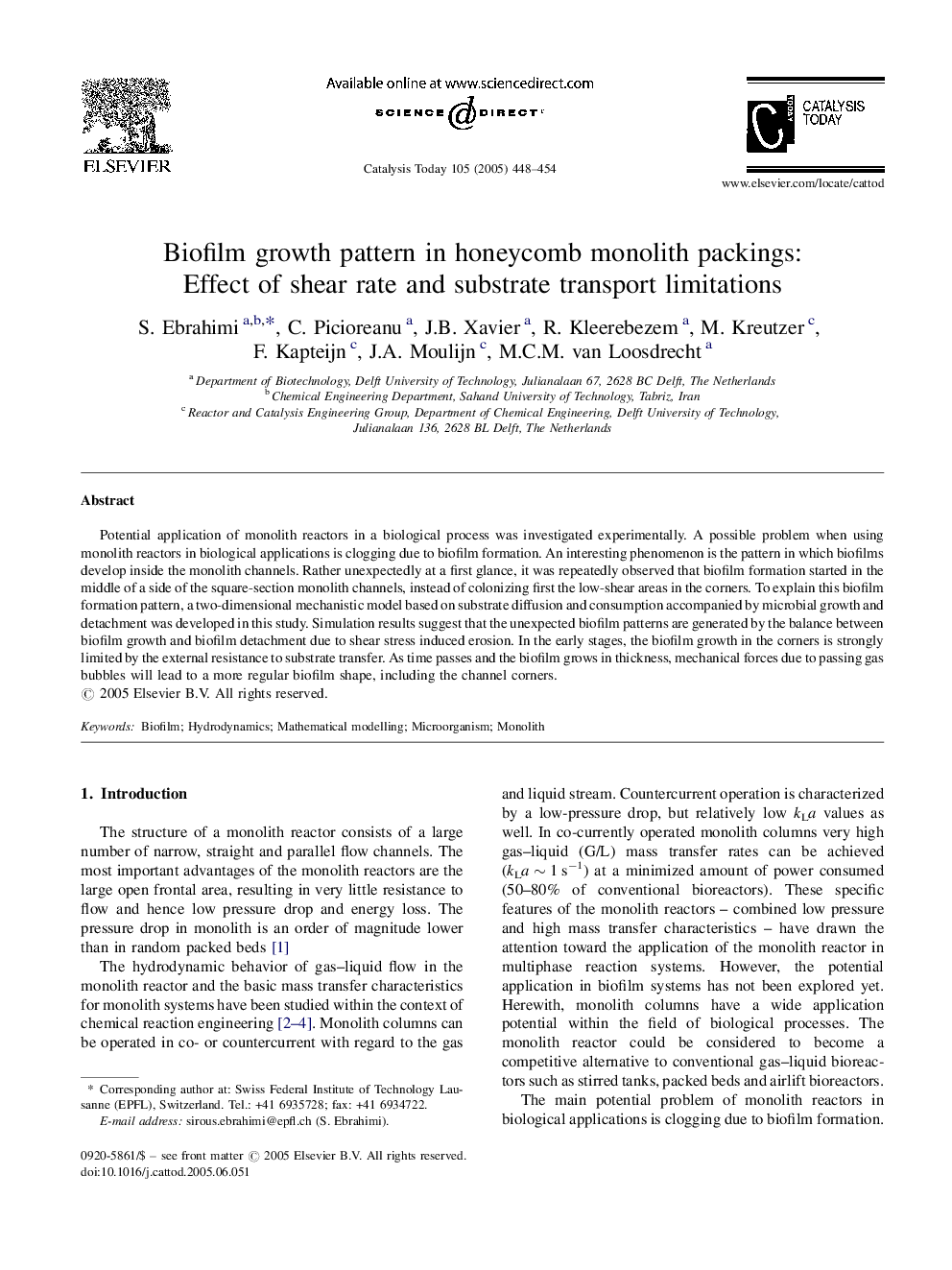| Article ID | Journal | Published Year | Pages | File Type |
|---|---|---|---|---|
| 9610340 | Catalysis Today | 2005 | 7 Pages |
Abstract
Potential application of monolith reactors in a biological process was investigated experimentally. A possible problem when using monolith reactors in biological applications is clogging due to biofilm formation. An interesting phenomenon is the pattern in which biofilms develop inside the monolith channels. Rather unexpectedly at a first glance, it was repeatedly observed that biofilm formation started in the middle of a side of the square-section monolith channels, instead of colonizing first the low-shear areas in the corners. To explain this biofilm formation pattern, a two-dimensional mechanistic model based on substrate diffusion and consumption accompanied by microbial growth and detachment was developed in this study. Simulation results suggest that the unexpected biofilm patterns are generated by the balance between biofilm growth and biofilm detachment due to shear stress induced erosion. In the early stages, the biofilm growth in the corners is strongly limited by the external resistance to substrate transfer. As time passes and the biofilm grows in thickness, mechanical forces due to passing gas bubbles will lead to a more regular biofilm shape, including the channel corners.
Related Topics
Physical Sciences and Engineering
Chemical Engineering
Catalysis
Authors
S. Ebrahimi, C. Picioreanu, J.B. Xavier, R. Kleerebezem, M. Kreutzer, F. Kapteijn, J.A. Moulijn, M.C.M. van Loosdrecht,
